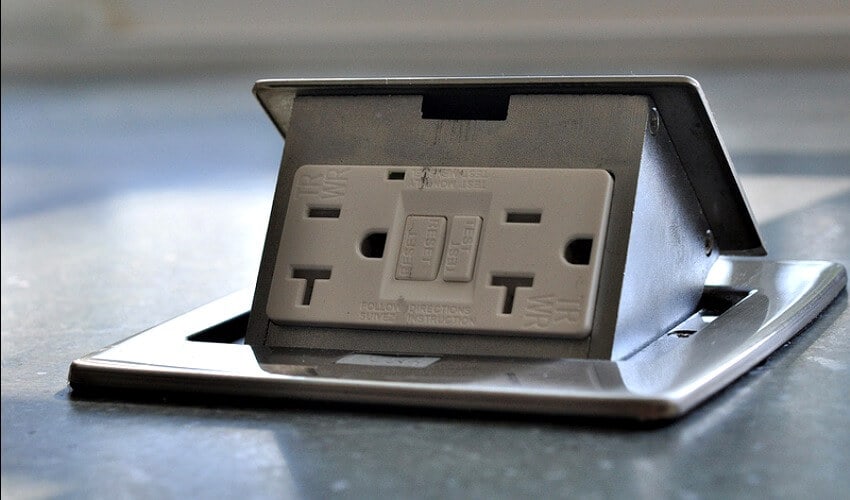
A GFI, or GFCI – Ground Fault Circuit Interrupter device protects us from receiving electric shocks from faults in the electrical devices we use in our home. It works by comparing the input current on the hot side to the output current on the neutral side. If there’s the slightest difference in current, on the order of a few milliamps, then there is current leaking out somewhere, possibly through somebody’s body. To protect us in this situation, the device very quickly cuts off the power supply to the leaking device, within 20-30 milliseconds, greatly reducing any possible human tissue damage from errant current.
There are two types of GFCI: one for personnel (the one you commonly hear about; extremely sensitive) and one that is less sensitive… and that there is also something called an AFCI breaker, which opens the circuit if arcs caused by loose connections are detected.
GFCI protection should be provided anywhere there is a receptacle installed in an area subject to moisture, as the presence of moisture greatly increases the danger of accidental shock. The National Electric Code specifies many such areas in residential dwelling units, such as, but not limited to: Bathrooms; Garages and accessory buildings; All exterior receptacles; Crawl spaces; Unfinished basements; Kitchens; Laundry, Utility, Wet Bar Sink Areas; and Boathouses. Local building authorities may have additional requirements. The list of areas requiring GFCI protection has increased with every code revision. They were initially only required around pool areas in the ’70s. Now they seem to be required nearly everywhere. You should question your local building authority for the latest, complete requirements.
GFCI protection can be provided either at the outlet by the now familiar outlet with the test and reset buttons, or at the distribution panel by way of a GFCI circuit breaker, which protects all outlets on the circuit it controls. Additional outlets can be protected downstream of the local outlet type with push buttons by wiring the added outlets to the LOAD side of the local GFCI device.
Thus, it is not possible to tell if a receptacle is GFCI protected or not by just looking at it. If any particular outlet doesn’t seem to be providing power, not only should you check the circuit breakers, but also check any GFCI outlets with push buttons in the area.
